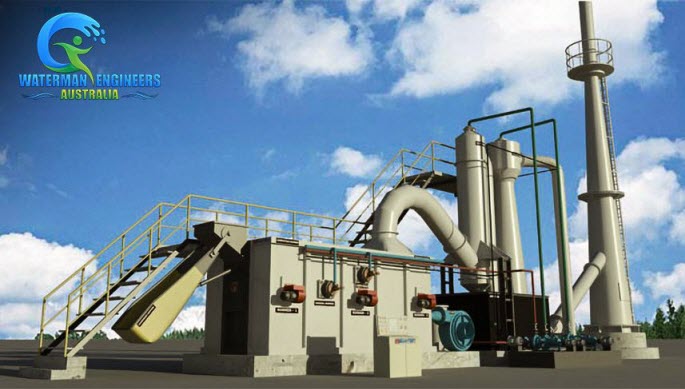Comparing the Environmental Impacts of Waste Incineration and Landfills
Waste management is a crucial part of modern society. As populations grow, so does the amount of waste generated, making it important to find the most effective and efficient ways of managing it. Two common methods of waste management are waste incineration and landfills. Both have their advantages and disadvantages, and it is essential to compare their environmental impacts.
Depending on where you live, landfills or incinerators can be a good option for waste disposal. However, we should be aware of the environmental impacts that come with each.
Landfills produce a huge amount of methane, which is one of the most potent greenhouse gases. They also leak contaminated water into the ground and release toxic chemicals, called leachate.
Waste Incineration: A Viable Solution for Waste Management
Waste incineration is a process where waste is burnt on a large scale to turn it into energy. This is often marketed as a green alternative to landfills because it can reduce the volume of trash that needs to be disposed of.
Waste incineration involves burning waste materials to generate energy. This method of waste management has several advantages, including reducing the volume of waste and generating electricity. Waste incineration is also an effective way of reducing greenhouse gas emissions, as it produces less methane compared to landfills. Additionally, the ash residue from incineration can be used as a building material or to create other products.
These wastes are also a source of emissions, such as particulates that can contaminate air quality. The emission of pollutants like dioxins and PFAS from these incinerators has been linked to an increased risk of cancer and reproductive disorders.
In addition to releasing harmful pollution into the air, incineration can also have severe environmental impacts on groundwater systems. This is because every time rain falls on a landfill, it forms a thick slurry of liquid garbage called leachate that can contaminate underground water systems.
Moreover, waste incineration can also contribute to climate change by emitting carbon dioxide into the air. This is because incineration produces more carbon dioxide per unit of electricity than coal-fired power plants.
However, waste incineration also has some disadvantages. The process of incineration releases air pollutants such as carbon monoxide, dioxins, and heavy metals. The incineration of certain waste materials, such as plastics, can also produce toxic gases, which can harm human health and the environment. Furthermore, incineration facilities can be expensive to construct and maintain, and they require a large amount of energy to operate.
Compared to landfills, waste incineration has a lower environmental impact. One of the primary advantages of waste incineration is that it significantly reduces greenhouse gas emissions. While incineration does produce emissions, they are significantly lower than the emissions produced by landfills. Additionally, waste incineration does not contaminate soil and groundwater, which is a major environmental benefit.
Landfills: A Traditional Method of Waste Management
The growth of the world population has increased the amount of waste generated every year. This is mainly due to the construction activities, industrial processes and power plants that produce lots of by-products and solid residues. This solid waste finds its way to different landfills from time to time.
Landfills have been used for centuries to dispose of waste materials. This method of waste management involves burying waste materials in a designated area. Landfills have some advantages, including being cheaper to construct and operate compared to waste incineration facilities. Additionally, landfills can be used for the restoration of landfills or to create new recreational areas such as parks or sports fields.
Landfills have many impacts on the environment that need to be considered. They affect groundwater, air and soil. They also cause a lot of pollution and release a lot of methane gas.
Landfills also have several disadvantages. They take up large amounts of land, which can lead to habitat destruction and loss of biodiversity. Landfills can also produce significant amounts of greenhouse gases, particularly methane, which contributes to climate change. Additionally, landfills can contaminate groundwater and soil, leading to health risks for nearby communities.
The Energy Production Potential of Waste Incineration
A significant advantage of waste incineration is that it can produce energy. As waste is burned, the heat generated can be harnessed to produce electricity and heat. This energy can be used to power homes, businesses, and industries. The energy produced by waste incineration reduces our reliance on fossil fuels, which contributes to greenhouse gas emissions and climate change.
Landfills, on the other hand, do not produce energy. Instead, the waste is buried, and as it decomposes, it produces methane gas. This methane gas can be captured and used to produce energy, but the amount of energy produced is relatively small compared to waste incineration.
The Economic Benefits of Waste Incineration
Waste incineration also has economic benefits. The incineration process generates revenue from the sale of energy produced. Additionally, the reduction in waste volume reduces the need for additional landfill space. This reduction in landfill space translates to cost savings for municipalities that would otherwise need to invest in expanding landfill capacity.
Furthermore, waste incineration can generate jobs in the construction, operation, and maintenance of incineration plants. The economic benefits of waste incineration can be significant, contributing to local economic growth and development.
While both waste incineration and landfills are methods of waste management, waste incineration is a better alternative to landfills when considering environmental impact. Waste incineration reduces greenhouse gas emissions, does not contaminate soil and groundwater, produces energy, and has economic benefits. As society continues to produce increasing amounts of waste, waste incineration is a sustainable and efficient solution for managing waste while reducing our environmental impact.













